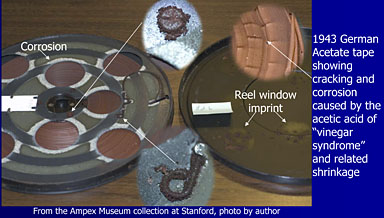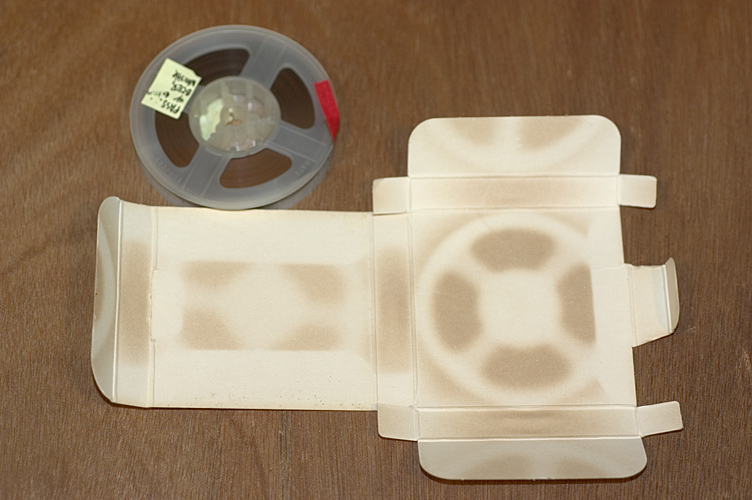A few months ago, I transferred several Tonschreiber tapes which were IG Farben Magnetophonband Typ C manufactured in Germany prior to the end of 1943. These had been stored in their almost-sealed steel cans and stunk. The best description of the smell was old lemon chicken.
We know that the sealed can will accelerate the vinegar syndrome degradation. The big question is are these tapes an anomaly or the mine canary for some (or all) acetate tapes?
The composite photo below shows some of the conditions that we found. Note especially the rolled outer strands showing extreme shrinkage from vinegar syndrome.
Click for a larger image.
We were able to transfer these tapes, but the sound quality suffered due to the unsteadiness of the tape transport. The quality of the sound was due mostly to the fact that this was recorded at 30 in/s (probably 77 cm/s) with a full-track head. Nothing beats areal density for robustness.

